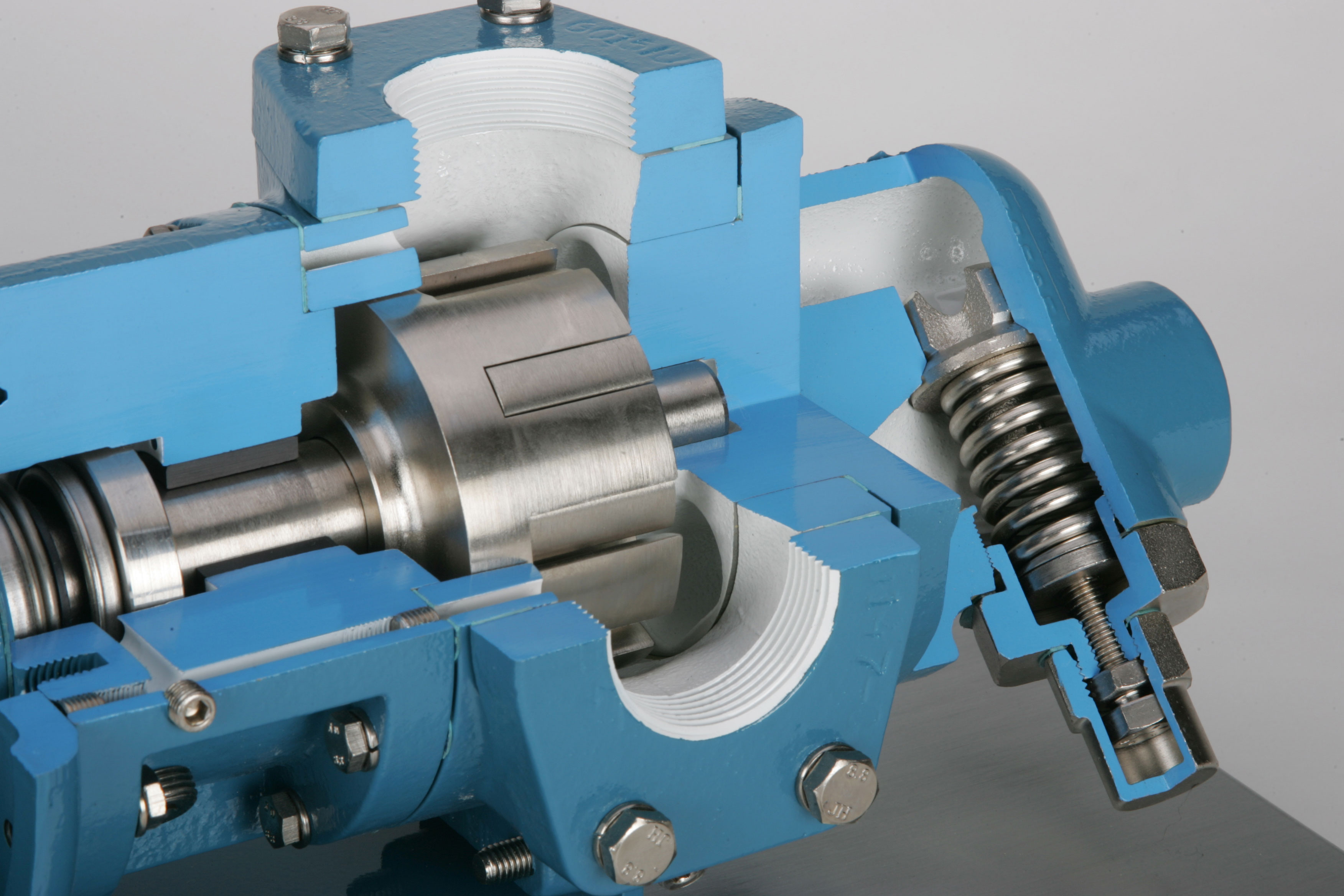A brand new internal gear pump is started up and the flow delivery is 30 percent to 40 percent below rated capacity, and the pump is making a loud chattering noise.
What could be the problem?
A likely guess might be cavitation. After all, low flow delivery and noise are the classic symptoms of cavitation. Another good guess might be a loose connection on the suction line allowing air to leak. In this case, however, there is plenty of suction pressure, and all of the suction piping is securely tightened.
Another clue is that the noise seems to be emanating from the internal relief valve mounted on the pump. All positive displacement pumps should have a relief valve in the system to prevent overpressure and potential damage. To protect the pump from damage due to over pressurization, many positive displacement pumps have an internal relief valve mounted right on the pump.
The relief valve is essentially a spring-loaded poppet valve. Figure 1 shows an internal relief valve mounted on a pump. The adjusting nut cap points toward the pump suction. When the discharge pressure exceeds the spring pressure on the poppet, flow is allowed to bypass from the pump discharge to the pump suction.

Figure 1. Internal Relief Valve Mounted on a Pump.
A common convention is to rate a relief valve at a pressure where full flow bypass occurs. In full flow bypass, 100 percent of rated flow bypasses from the pump discharge to the pump suction. Less well known is the concept of “cracking pressure.” At cracking pressure, the pump discharge pressure will crack open the poppet and allow some partial flow to bypass. Cracking pressure is commonly at 80 percent to 85 percent of full bypass pressure. If the pump happens to operate at a pressure in between “cracking pressure’ and “full bypass pressure,” then the relief valve poppet will open and allow partial bypass.
Chattering occurs where the poppet opens and closes in a rapid cycle. The chattering accounts for the 30 percent to 40 percent loss of flow delivery, and the noise in our mystery start-up problem.
Also note that when handling thick sticky materials, the relief valve poppet may not totally reseat once the poppet is forced off its seat. This may create a situation where some fluid continues to be bypassed even after the end of the overpressure situation that caused the poppet to open and the pump discharge pressure is below the cracking pressure.
The way to avoid these potential problems with relief valves is to specify a relief valve set pressure at the time of pump purchase and have the relief valve full bypass pressure set at 25 percent higher than the maximum pump discharge pressure anticipated. (The 25 percent figure is a general guideline only, and the pump manufacturer’s specific recommendations for pump mounted internal relief valves should be consulted.)
Another consideration is that maximum discharge pressure anticipated might be higher than the standard duty pump rating because of cold starts, upset conditions, and other scenarios. Most pump mounted internal relief valves can be field adjusted, and here again pump manufacturer’s specific instructions should be consulted for field adjusting relief valves.
It is easy to forget about relief valve set points when specifying a pump, but a chattering episode makes for an unpleasant reminder. A little understanding of how pump mounted internal relief valves operate and a little attention on the correct method to specify the fully bypass set point will go a long way towards keeping unwanted relief valve bypassing off the pump start-up troubleshooting list.


